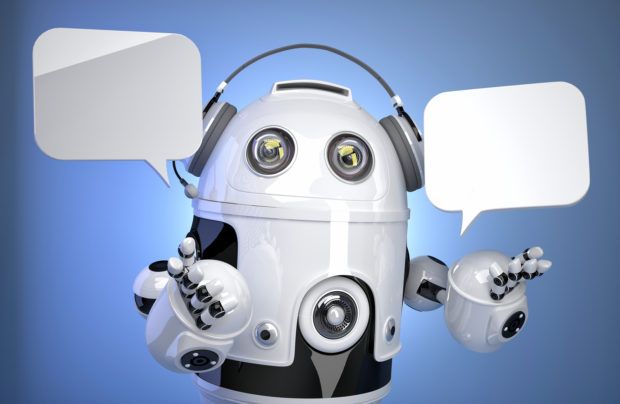I built a chatbot. It can only do a handful of things, and it’s even dumber than the average chatbot. But it works, and I can talk to it through Facebook Messenger. More importantly, I’m not a coder.
Some of the world’s largest technology companies are banking on a future where people will send text messages to airlines, banks, restaurants or stores and receive automated responses. Facebook Inc., Microsoft Corp., IBM and Tencent each held events this year centered around promoting their bot-related initiatives to software makers. Twitter Inc. introduced chatbot-like functions with Pizza Hut and other brands on Tuesday to field customer service inquiries.
Many are betting these tools will soon be everywhere, with bot avatars for pop stars and mom-and-pop shops. (The band Kiss already has one.)
For that bot-filled future to unfold, several startups are hoping to enable anyone—not just software developers—to build a bot.
The race among these startups heated up in April, when Facebook made chatbots available to Messenger’s billion-plus users. Facebook has said there are more than 30,000 chatbots available through its app. In September, Google bought Api.ai, a service that helps developers build bots.
Making chatbots accessible to people who can’t code “is going to be a way a lot of businesses end up building their first few bots,” said Phil Libin, a partner at General Catalyst. He compared these nascent bot-building tools with Squarespace Inc. or Wix.com Ltd., which make it easy to build a website.
The chatbots you can create with these services are fairly rudimentary. If the bot sees a word or phrase it doesn’t recognize or doesn’t have an answer for, the conversation hits a dead end. To keep the chatter flowing, many chatbots act like an automated phone system: They nudge users to pick from a small set of responses, displayed as buttons. In most cases, you can’t press 0 to get an operator.
“It’s very important to set expectations,” said Dmitry Dumik, whose company Chatfuel powers news-delivering chatbots for the New York Times and TechCrunch. “You can’t have a chatbot like in the movie Her.”
Octane co-founder Matt Schlicht is optimistic that bots will someday become more useful and benefit from advancements in artificial intelligence.
Schlicht’s startup is targeting brands with loyal followings for its chatbot builder. Octane recently teamed up with 50 Cent to answer messages sent to his Facebook page. The rapper’s bot can help fans do a few things, such as buying a G-Unit hat or signing up for updates from the musician. If you ask it a question it doesn’t know how to answer, the bot simply replies: “whats up fam.”
“People message these Facebook pages all the time, and for the most part, no one responds, and the message goes into a black hole,” said Schlicht. “It’s a huge missed opportunity.”
There are build-your-own chatbot tools that try to replicate dead people, and others that cater to the living. Olabot lets users create a bot version of themselves in minutes just by talking to it. The end result functions as a kind of social profile: Users can link their Facebook, Instagram, Twitter, Medium and Spotify accounts, and then answer multiple-choice questions about their interests and views, such as, “Would you rather talk about relationships or politics?” The goal, according to Olabot CEO Esther Crawford: “It should be as easy as creating an Instagram account.”





















 Insurance Industry ‘Megadeals’ Dominate 2025, Says PwC
Insurance Industry ‘Megadeals’ Dominate 2025, Says PwC  Unpacking a Consumer Intervenor’s Novel Idea
Unpacking a Consumer Intervenor’s Novel Idea  The Hardest Part of Innovation in Insurance Isn’t Technology; It’s Culture
The Hardest Part of Innovation in Insurance Isn’t Technology; It’s Culture  A Practical Blueprint: The Five Plays of an Innovation Culture
A Practical Blueprint: The Five Plays of an Innovation Culture 
